#Technology sector funds
Explore tagged Tumblr posts
Text
Tech Titans: Discover the Best IT Sector Mutual Funds in India
#IT sector mutual funds#Technology sector funds#Mutual funds in India#Investment opportunities#Top performing funds#IT industry investments#Indian mutual funds#Technology growth funds#Sector-specific investments#Technology stocks
0 notes
Text
ETFs are set to hit record inflows, but this wild card could change it
Exchange-traded fund inflows have already topped monthly records in 2024, and managers think inflows could see an impact from the money market fund boom before year-end. “With that $6 trillion plus parked in money market funds, I do think that is really the biggest wild card for the remainder of the year,” Nate Geraci, president of The ETF Store, told CNBC’s ��ETF Edge” this week. “Whether it be…
#business news#Corporate stock#Exchange-traded funds#Federal Reserve System#Gold COMEX (Apr&x27;23)#Interest Rates#Investment strategy#Markets#Metal Commodities#Money market funds#Money markets#Personal investing#Precious metal markets#Precious metals industry#SPDR Gold MiniShares Trust#SPDR Gold Shares#Stock markets#Technology Select Sector SPDR Fund#Treasury bills#Treasury notes#US Dollar#Wall Street
0 notes
Text
Useful Tips for Becoming a Successful Agriculture Investor
Agriculture investment refers to the allocation of financial resources, capital, or assets into various aspects of the agricultural sector with the expectation of generating a return on investment (ROI). This could mean investing monies in agriculture land for sale such as coconut land for sale in Sri Lanka, or other types of investments. It involves deploying funds in activities and projects related to agriculture for the purpose of profit, income generation, or long-term wealth creation. Agriculture investment can take many forms, including:
Farmland Acquisition: Purchasing agricultural land for the cultivation of crops or the raising of livestock. This can involve both large-scale and small-scale farming operations.
Infrastructure Development: Investing in the construction and improvement of infrastructure such as irrigation systems, roads, storage facilities, and processing plants to enhance agricultural productivity and efficiency.
Technological Advancements: Funding the development and adoption of agricultural technologies, such as precision agriculture, automation, and biotechnology, to improve crop yields and reduce operational costs.
Agribusiness Ventures: Investing in agribusinesses, such as food processing, distribution, and marketing, that are part of the agricultural value chain.
Research and Development: Supporting research initiatives related to agriculture to develop new crop varieties, pest-resistant strains, and sustainable farming practices.
Input Supply: Investing in the production and distribution of agricultural inputs like seeds, fertilisers, pesticides, and machinery.
Commodity Trading: Speculating on the future prices of agricultural commodities, such as grains, oilseeds, and livestock, through commodity markets or futures contracts.
Sustainable Agriculture: Funding practices and projects aimed at sustainable and environmentally responsible farming methods, which can include organic farming, agroforestry, and conservation efforts.
Rural Development: Supporting initiatives that improve the overall economic and social well-being of rural communities, often through investments in education, healthcare, and infrastructure.
Venture Capital and Start-ups: Investing in start-ups and companies focused on innovations in agriculture, such as vertical farming, aquaculture, or agricultural technology (AgTech).
Agriculture investment is important for food security, economic development, and job creation in many regions. However, it also comes with risks related to weather conditions, commodity price fluctuations, and market dynamics. Investors often conduct thorough research and risk assessments before committing their resources to agricultural ventures. Additionally, they may need to consider factors like government policies, environmental regulations, and social impacts on their investment decisions in the agricultural sector.
How to become a successful agriculture investor
Becoming a successful agriculture investor requires a combination of financial acumen, agricultural knowledge, and a strategic approach to investment. Here are some steps to help you become a successful agriculture investor:
Educate Yourself: Gain a strong understanding of the agricultural sector, including the different sub-sectors (crops, livestock, agribusiness, etc.). Stay updated on industry trends, market conditions, and emerging technologies.
Set Clear Investment Goals: Define your investment objectives, whether it is long-term wealth creation, income generation, or diversification of your investment portfolio.
Risk Assessment: Understand and assess the risks associated with agriculture investments, such as weather-related risks, market volatility, and regulatory changes, whether you are looking at land for sale or any other type of investment.
Develop a Diversified Portfolio: Diversify your investments across different agricultural sectors and geographic regions to spread risk.
Market Research: Conduct thorough market research to identify promising investment opportunities and potential demand for agricultural products.
Build a Network: Establish connections with farmers, agricultural experts, government agencies, and industry stakeholders who can provide insights and opportunities.
Financial Planning: Create a budget and financial plan that outlines your investment capital, expected returns, and cash flow requirements.
Select the Right Investment Type: Choose the type of agriculture investment that aligns with your goals, whether it is farmland, agribusiness ventures, or agricultural technology.
Due Diligence: Conduct comprehensive due diligence on potential investments, including assessing the quality of farmland, the financial health of agribusinesses, and the technology's potential for scalability and profitability.
Sustainable Practices: Consider investments in sustainable and environmentally responsible agriculture practices, as they are gaining importance in the industry.
Risk Management: Implement risk management strategies, such as insurance, to protect your investments from unforeseen events like natural disasters or crop failures.
Continuous Learning: Stay informed about changes in the agricultural industry and adapt your investment strategy accordingly.
Legal and Regulatory Compliance: Understand and comply with local, national, and international regulations and tax laws that may impact your agriculture investments.
Monitor and Adjust: Regularly review the performance of your investments and be prepared to make adjustments or exit underperforming ones.
Long-Term Perspective: Agriculture investments often require a long-term perspective, so be patient and avoid making impulsive decisions based on short-term market fluctuations.
Seek Professional Advice: Consult with financial advisors, agricultural experts, and legal professionals to ensure that your investments are structured and managed effectively.
Successful agriculture investment often involves a mix of financial expertise, industry knowledge, and a willingness to adapt to changing conditions. It is important to approach agriculture investment with a well-thought-out strategy, and to be prepared for both opportunities and challenges in this sector.
#Agriculture investment refers to the allocation of financial resources#capital#or assets into various aspects of the agricultural sector with the expectation of generating a return on investment (ROI). This could mean#or other types of investments. It involves deploying funds in activities and projects related to agriculture for the purpose of profit#income generation#or long-term wealth creation. Agriculture investment can take many forms#including:#●#Farmland Acquisition: Purchasing agricultural land for the cultivation of crops or the raising of livestock. This can involve both large-sc#Infrastructure Development: Investing in the construction and improvement of infrastructure such as irrigation systems#roads#storage facilities#and processing plants to enhance agricultural productivity and efficiency.#Technological Advancements: Funding the development and adoption of agricultural technologies#such as precision agriculture#automation#and biotechnology#to improve crop yields and reduce operational costs.#Agribusiness Ventures: Investing in agribusinesses#such as food processing#distribution#and marketing#that are part of the agricultural value chain.#Research and Development: Supporting research initiatives related to agriculture to develop new crop varieties#pest-resistant strains#and sustainable farming practices.#Input Supply: Investing in the production and distribution of agricultural inputs like seeds#fertilisers#pesticides#and machinery.
0 notes
Text

https://meidasnews.com/news/republican-mayor-of-3rd-largest-city-in-az-endorses-harris
John Giles, the Republican Mayor of Mesa, Arizona, wrote an OpEd today for the Arizona Republic stating the reasons why he is endorsing Kamala Harris for President. Mesa is the 3rd largest city in Arizona, and the Arizona Republic is the largest newspaper by circulation in the crucial battleground state.
Giles listed the following reasons why he can't support Donald Trump: 1. He refused to accept the outcome of the 2020 election, and continues to do so. 2. He continues to trash the American legal system to delegitimize it. 3. He orchestrated the "fake elector" scheme in Arizona. 4. He orchestrated the sham "audit" of the election by the Arizona Senate and Cyber Ninjas. 5. He blocked the bipartisan border bill negotiated in the Senate. 6. He treated Infrastructure Week like a joke when cities like his badly needed it.
7. He is a convicted felon and threat to the nation. 8. He has threatened to abandoned NATO. 9. He has eroded public confidence in our institutions. 10. His advisors and associates drafted Project 2025, which is a threat to our freedoms. 11. He is crude and vulgar. Giles then listed the reasons why he isn't just anti-Trump, he is also pro-Harris: 1. The Administration delivered on their promise with infrastructure funding for the Phoenix-Mesa Airport, and made technological investments in the transportation sector. 2. Thousands of new jobs are being created in Arizona with the CHIPS Act. 3. She has taken a strong stand against gun violence. 4. She has taken a strong stand for women's rights which are under assault from MAGA Republicans.
Giles then concluded with the following: "We can choose a future for our children and grandchildren based on decency, respect and morality — or succumb to the crudeness and vulgarity of Trump and J.D. Vance and the far-right agenda they would champion.
Arizona leaders like McCain and Sen. Mark Kelly have embodied the commitment to country over party. And it’s that same high caliber of character and leadership I see in Vice President Harris.
That’s why I’m standing with her. Kamala Harris is the competent, just and fair leader our country deserves. This year too much is at stake to vote Republican at the top of the ticket.
It will take Arizona Republicans, independents and Democrats standing together against a far-right agenda. Let us put country over party by voting to stop Trump and protect our democracy."
Powerful stuff.
Winning back Arizona is crucial for Donald Trump. It is difficult to see any electoral path to victory for Trump without Arizona. He has continued to support candidates in that state like Kari Lake and Blake Masters who are toxic to moderate voters. He continues to attack the McCain family, who remain popular with those same moderate Arizona voters.
This endorsement by Giles certainly doesn't help Donald Trump, and gives a big boost to Kamala Harris in Arizona.
4K notes
·
View notes
Text
tbh the thing that gonna make kabru all shy and make his heart flutter is seeing laios like actually being a good king i cannot imagine anything makes him feel quite as in love as kabru saying like "we should try to advance our technological sector" and laios hitting him back with "hmm most of the half-foots in chilchucks union were trap disarmers. i bet theyd be interested in learning the mechanics behind it and theyd be easily able to adapt that if we gave the union some scholarship funds. can you see if we can spare the budget, or do we need to set up a tax to fund it?"
like kabru would just melt
2K notes
·
View notes
Text
Things the Biden-Harris Administration Did This Week #34
Sep 13-20 2024.
President Biden announced $1.3 billion in new funding for Historically Black Colleges and Universities. The Biden-Harris Administration has already invested a record breaking $17 billion in HBCUs since the President took office. HBCUs represent an important engine for making black professionals. 40% of all Black engineers, 50% of all Black teachers, 70% of all Black doctors and dentists, 80% of all Black judges, and the first black Vice-President, Kamala Harris, are HBCU graduates. HBCUs have also been proven to be far better at boosting the long term economic prospects of graduates than non-HBCU colleges. The bulk of the new funding will go directly to supporting students and helping them pay for college.
The Department of Transportation celebrated 60,000 infrastructure projects funding by the Biden-Harris Bipartisan Infrastructure Law. This landmark is a part of the Biden-Harris team's effort to address America's long neglected infrastructure. From major multi-state projects to small town railway crossings every project was lead by a local community in need not a make-work project dreamed up in Washington
The Department of Energy announced over 3 billion dollars to support the battery sector. The 25 projects across 14 states will help support over 12,000 jobs. Advanced battery technology is key to the shift to a carbon energy free economy. The move is meant to not only boost battery production but also shift it away from China and toward America.
Maine and Rhode Island both launched a partnership with the federal government to help save low income families money on their utility bills. The program offers low and moderate income households aid in updating wiring, switching to energy efficient appliances, and installing heat pumps.
The EPA announced $156 million to help bring solar power to low-income New Mexico residents. This is part of the Biden-Harris Administration’s "Solar for All" project aimed at helping low-income people afford the switch over to solar power. It's expected that 21,750 low-income households in New Mexico will benefit from the money. New Mexicans can expect to save over the next 20 years $311 million in energy costs.
The Department of The Interior announced the first ever leases for wind power in the Gulf of Maine. The leases for 8 areas off the coast of Massachusetts, New Hampshire, and Maine will be sold in late October. The Department believes that once developed the wind power from these leases could produce 13 gigawatts of clean offshore wind energy, enough to power 4.5 million homes. When added to the 15 gigawatts already approved by the Biden-Harris team it brings America close to Biden's 30 gigawatts of clean offshore wind power by 2030.
The Senate approved the appointment of Kevin Ritz to the Court of Appeals for the Sixth Circuit, which covers Kentucky, Michigan, Ohio, and Tennessee. The Senate also approved Mary Kay Costello and Michelle Williams Court to district court judgeships in Pennsylvania and California respectively. Costello is the 12th LGBT judge appointed by President Biden, making him the President to appoint the most LGBT people to the federal bench more than during Obama's 8 years. President Biden has also appointed more black women, such as Judge Court, to the bench than any other President. Judge Court also represents President Biden's move to appoint civil rights attorneys to the bench, Court worked for the ACLU in the mid-90s and was a civil rights expect at HUD in the early 2000s. This brings the total number of judges appointed by Biden to 212.
#Thanks Biden#Joe Biden#kamala harris#HBCU#infrastructure#climate change#green energy#wind power#judges
296 notes
·
View notes
Text
The federal government will be investing $2.4 billion to accelerate Canada’s artificial intelligence (AI) sector, Prime Minister Justin Trudeau announced Sunday. The investment will be divided between a number of measures meant to advance job growth in the AI and tech industry and boost businesses’ productivity. “This announcement is a major investment in our future, in the future of workers, in making sure that every industry, and every generation, has the tools to succeed and prosper in the economy of tomorrow,” Trudeau said in a press release Sunday. Majority of the funds, $2 billion, will go toward increasing access to computing and technological infrastructure. Another $200 million is being invested into AI start-ups to accelerate the technology in “critical sectors” such as health care, agriculture and manufacturing, the release says. Additional funds will be put toward helping small and medium-sized businesses incorporate AI, with another $50 million being committed to help train workers whose jobs may be disrupted by the technology.
Continue Reading.
Tagging: @politicsofcanada
305 notes
·
View notes
Text
Fintech bullies stole your kid’s lunch money

I'm coming to DEFCON! On Aug 9, I'm emceeing the EFF POKER TOURNAMENT (noon at the Horseshoe Poker Room), and appearing on the BRICKED AND ABANDONED panel (5PM, LVCC - L1 - HW1–11–01). On Aug 10, I'm giving a keynote called "DISENSHITTIFY OR DIE! How hackers can seize the means of computation and build a new, good internet that is hardened against our asshole bosses' insatiable horniness for enshittification" (noon, LVCC - L1 - HW1–11–01).

Three companies control the market for school lunch payments. They take as much as 60 cents out of every dollar poor kids' parents put into the system to the tune of $100m/year. They're literally stealing poor kids' lunch money.
In its latest report, the Consumer Finance Protection Bureau describes this scam in eye-watering, blood-boiling detail:
https://files.consumerfinance.gov/f/documents/cfpb_costs-of-electronic-payment-in-k-12-schools-issue-spotlight_2024-07.pdf
The report samples 16.7m K-12 students in 25k schools. It finds that schools are racing to go cashless, with 87% contracting with payment processors to handle cafeteria transactions. Three processors dominate the sector: Myschoolbucks, Schoolcafé, and Linq Connect.
These aren't credit card processors (most students don't have credit cards). Instead, they let kids set up an account, like a prison commissary account, that their families load up with cash. And, as with prison commissary accounts, every time a loved one adds cash to the account, the processor takes a giant whack out of them with junk fees:
https://pluralistic.net/2024/02/14/minnesota-nice/#shitty-technology-adoption-curve
If you're the parent of a kid who is eligible for a reduced-price lunch (that is, if you are poor), then about 60% of the money you put into your kid's account is gobbled up by these payment processors in service charges.
It's expensive to be poor, and this is no exception. If your kid doesn't qualify for the lunch subsidy, you're only paying about 8% in service charges (which is still triple the rate charged by credit card companies for payment processing).
The disparity is down to how these charges are calculated. The payment processors charge a flat fee for every top-up, and poor families can't afford to minimize these fees by making a single payment at the start of the year or semester. Instead, they pay small sums every payday, meaning they pay the fee twice per month (or even more frequently).
Not only is the sector concentrated into three companies, neither school districts nor parents have any meaningful way to shop around. For school districts, payment processing is usually bundled in with other school services, like student data management and HR data handling. For parents, there's no way to choose a different payment processor – you have to go with the one the school district has chosen.
This is all illegal. The USDA – which provides and regulates – the reduced cost lunch program, bans schools from charging fees to receive its meals. Under USDA regs, schools must allow kids to pay cash, or to top up their accounts with cash at the school, without any fees. The USDA has repeatedly (2014, 2017) published these rules.
Despite this, many schools refuse to handle cash, citing safety and security, and even when schools do accept cash or checks, they often fail to advertise this fact.
The USDA also requires schools to publish the fees charged by processors, but most of the districts in the study violate this requirement. Where schools do publish fees, we see a per-transaction charge of up to $3.25 for an ACH transfer that costs $0.26-0.50, or 4.58% for a debit/credit-card transaction that costs 1.5%. On top of this, many payment processors charge a one-time fee to enroll a student in the program and "convenience fees" to transfer funds between siblings' accounts. They also set maximum fees that make it hard to avoid paying multiple charges through the year.
These are classic junk fees. As Matt Stoller puts it: "'Convenience fees' that aren't convenient and 'service fees' without any service." Another way in which these fit the definition of junk fees: they are calculated at the end of the transaction, and not advertised up front.
Like all junk fee companies, school payment processors make it extremely hard to cancel an automatic recurring payment, and have innumerable hurdles to getting a refund, which takes an age to arrive.
Now, there are many agencies that could have compiled this report (the USDA, for one), and it could just as easily have come from an academic or a journalist. But it didn't – it came from the CFPB, and that matters, because the CFPB has the means, motive and opportunity to do something about this.
The CFPB has emerged as a powerhouse of a regulator, doing things that materially and profoundly benefit average Americans. During the lockdowns, they were the ones who took on scumbag landlords who violated the ban on evictions:
https://pluralistic.net/2021/04/20/euthanize-rentier-enablers/#cfpb
They went after "Earned Wage Access" programs where your boss colludes with payday lenders to trap you in debt at 300% APR:
https://pluralistic.net/2023/05/01/usury/#tech-exceptionalism
They are forcing the banks to let you move your account (along with all your payment history, stored payees, automatic payments, etc) with one click – and they're standing up a site that will analyze your account data and tell you which bank will give you the best deal:
https://pluralistic.net/2023/10/21/let-my-dollars-go/#personal-financial-data-rights
They're going after "buy now, pay later" companies that flout borrower protection rules, making a rogues' gallery of repeat corporate criminals, banning fine-print gotcha clauses, and they're doing it all in the wake of a 7-2 Supreme Court decision that affirmed their power to do so:
https://pluralistic.net/2024/06/10/getting-things-done/#deliverism
The CFPB can – and will – do something to protect America's poorest parents from having $100m of their kids' lunch money stolen by three giant fintech companies. But whether they'll continue to do so under a Kamala Harris administration is an open question. While Harris has repeatedly talked up the ways that Biden's CFPB, the DOJ Antitrust Division, and FTC have gone after corporate abuses, some of her largest donors are demanding that her administration fire the heads of these agencies and crush their agenda:
https://prospect.org/power/2024-07-26-corporate-wishcasting-attack-lina-khan/
Tens of millions of dollars have been donated to Harris' campaign and PACs that support her by billionaires like Reid Hoffman, who says that FTC Chair Lina Khan is "waging war on American business":
https://prospect.org/power/2024-07-26-corporate-wishcasting-attack-lina-khan/
Some of the richest Democrat donors told the Financial Times that their donations were contingent on Harris firing Khan and that they'd been assured this would happen:
https://archive.is/k7tUY
This would be a disaster – for America, and for Harris's election prospects – and one hopes that Harris and her advisors know it. Writing in his "How Things Work" newsletter today, Hamilton Nolan makes the case that labor unions should publicly declare that they support the FTC, the CFPB and the DOJ's antitrust efforts:
https://www.hamiltonnolan.com/p/unions-and-antitrust-are-peanut-butter
Don’t want huge companies and their idiot billionaire bosses to run the world? Break them up, and unionize them. It’s the best program we have.
Perhaps you've heard that antitrust is anti-worker. It's true that antitrust law has been used to attack labor organizing, but that has always been in spite of the letter of the law. Indeed, the legislative history of US antitrust law is Congress repeatedly passing law after law explaining that antitrust "aims at dollars, not men":
https://pluralistic.net/2023/04/14/aiming-at-dollars/#not-men
The Democrats need to be more than The Party of Not Trump. To succeed – as a party and as a force for a future for Americans – they have to be the party that defends us – workers, parents, kids and retirees alike – from corporate predation.

Support me this summer on the Clarion Write-A-Thon and help raise money for the Clarion Science Fiction and Fantasy Writers' Workshop!

If you'd like an essay-formatted version of this post to read or share, here's a link to it on pluralistic.net, my surveillance-free, ad-free, tracker-free blog:
https://pluralistic.net/2024/07/26/taanstafl/#stay-hungry

Image: Cryteria (modified) https://commons.wikimedia.org/wiki/File:HAL9000.svg
CC BY 3.0 https://creativecommons.org/licenses/by/3.0/deed.en
#pluralistic#fintech#ed-tech#finance#usury#payment processing#chokepoints#corruption#monopoly#cfpb#consumer finance protection bureau
213 notes
·
View notes
Text
youtube
Transcript:
"Many people still believe that the spread of transgender ideology represents a harmless fad, or a phase, or a problem of youth culture or social media, I've chosen to talk about the wider context and conditions that have allowed this ideology to take hold.
Transgenderism is a predatory, an authoritarian, neoliberal ideology, and one that couldn't take hold outside of the context of the rape culture that Steff described. I want to make this as clear as I can in ten minutes. My slideshow is just a series of books, my sources, and if you want to record them, go ahead.
So the first point to make about neoliberalism is that it's basically synonymous with globalization and with corporatization. It is not just a flawed economic policy, it is a corporate backlash against the political left and a tool of colonization. The 19th and 20th centuries saw the rise of a strong political left, indigenous Renaissance movements, workers unions, successful independent struggles that ousted colonizers, anti-war protests, and women's rights movements.
By the 1990's the World Bank and the International Monetary Fund had a response. They adopted policies that would reverse the progress these movements made. They began to hand out financial loans to governments only on the condition that they undergo what is euphemistically called ‘structural adjustment’, a term to ponder in relation to this issue, for the benefit of multinational corporations.
This structural adjustment has three basic components. Firstly, governments have had to make natural resources, lands, and public infrastructure, available for purchase by foreign corporations. Secondly they are compelled to drastically cut back public spending on health, education, welfare, and social services. Lastly, regulations and legal protections that restrict corporate profiteering, like laws that protect workers from exploitation need to be removed.
This is neoliberalism: the commodification of nature and the removal and defunding of social services and protections, ramped up for the age of multinational corporations. Neoliberalism and its so-called structural adjustments are packaged with rhetoric about freedom. The story is that our so-called free market—in which private sector employers face minimal barriers to profiteering—fosters job and opportunity creation and a trickle-down effect that gradually enables the empowerment of the self-made individual or employee and choice for consumers.
In her book the Shock Doctrine, Noemi Klein points out that people—especially people who have been fighting for centuries for true liberation—don't actually take these sorts of reforms lying down, so alongside propaganda, disaster conditions have been crucial for imposing neoliberalism worldwide. That's why Klein calls neoliberalism disaster capitalism.
Structural adjustment often follows a state of emergency, a natural disaster, or a military invasion or coup. Multinationals and profiteers and agribusiness and tourism move in and benefit. And because women are made especially vulnerable when land is sold off and degraded, subsistence lifestyles are destroyed, wages drop and welfare and health care are harder to access.
One of the industries that has profited most from neoliberalisation is prostitution. The global sex trade lobby is extremely strong at the moment, and of course in a neoliberal climate, it sells us the idea that prostitution is a legitimate business and that pimps are just job creators, in an industry we are now supposed to call sex work, and perceive to be empowering for women as individuals, disregarding the factors of poverty, land theft, sexism, and rape.
Combine this with tourism and the internet and you have huge industries, and sex tourism, trafficking, and pornography—one in ten websites are porn sites. The industry is worth more than the combined revenue of the top ten web technology companies. To encourage porn consumption, porn is also normalized through mainstream media. All of this fuels a climate, described by Steve earlier, a climate of male sexual entitlement, rape and violation, objectification, body hatred, dissociation, dysphoria, and anorexia.
These are the disaster conditions that transgender ideology exploits and that enable whole populations to buy into the idea that not only can women be bought and sold like products, but womanhood itself is a commodity to which men should be entitled. Transgenderism is a neoliberal ideology that treats the natural fact of biological sex itself as something to be plowed over and substituted with the cash crop of gender identity.
It is "empowering" for the individual to reject biological sex, and substitute it for a customized gender that expresses one's own essential tastes. Just like your clothes and shoes are meant to do, and even your car and your cell phone screen protector and your toothbrush.
The mindless mantra, “trans women are women”, encapsulates both the ideology and attitudes of transgenderism and the neoliberal zeitgeist in three words. It implies the destruction of nature, of biology, of our own bodies, including through the radical mastectomies increasingly conducted on adolescent girls, mainly lesbians. It is based on the commodification of women and it leads to the removal of legal protections and social supports designated for women and based on sex. And using this mantra, ‘trans women are women” like a threat, because if you don't accept it you're a ‘bigot’, men are colonizing woman's hard-won spaces, organizations, movements, and safe houses, as well as lesbian culture.
This mantra is also having the effect of consolidating the domestication of the whole political left—peace groups, unions, socialist organizations like Anna described—and assimilating them with the establishment as they ingest and then commit to and prioritize transgender mythology, purge feminists and independent critical thinkers from their ranks, and build stronger ties to the liberal political parties and big money, also promoting gender identity and funding the pride parades.
In this way the lie that trans women are women is the neoliberal answer to the myth of the resurrection within the Catholic Church. It is the one mad thing that you need to accept these days to demonstrate that, despite whatever else you believe in or work toward, you are ultimately willing to surrender your critical faculties and submit to power and to groupthink.
People would never buy the idea that men can get pregnant or that a lesbian can have a penis outside of the disaster conditions we feminists call ‘rape culture’. The conditions of male sexual entitlement—a woman being raped somewhere in the world every single second of the day, normalized porn objectification, dysphoria and body hatred.
In a culture that honored women, cared for children, and was grounded in the natural world, the spread of transgender ideology would not occur. Voltaire’s famous warning that 'those who can make you believe absurdities can make you commit atrocities' is also pertinent.
Despite all these large-scale pop-up social movements taking place throughout the West at the moment, it is actually a dangerous and threatening climate. We live in a climate in which the absurdities of transgenderism are promoted so widely, while they cause such serious irreversible harm, and it's so taboo to question. Women who speak out now face ostracism, and losing their livelihoods at the hands of the very same people who are currently joining mass movements that claim to fight for the planet and for social justice.
But as Audrey Lorde famously said, “Your silence will not protect you.” So to women out there holding their tongues to stay safe I say, “We're living in an era of rising authoritarianism, and this ideology is a key vehicle for it. You need to find your sisters. Now is the time to speak the truth where you can—in spite of those who will turn on you, who'll refuse to offer you solidarity—and find your sisters. We're here, we're healing, and finding our voices together, and we want you among us."
#feministdragon#feministdragon reinventing our economy#radblr#radical feminist safe#radical feminism#radfems#radical feminists do interact#radfeminism#radical feminist#radical feminist community#feminist#women's liberation#radfem#feminism#Youtube
72 notes
·
View notes
Text
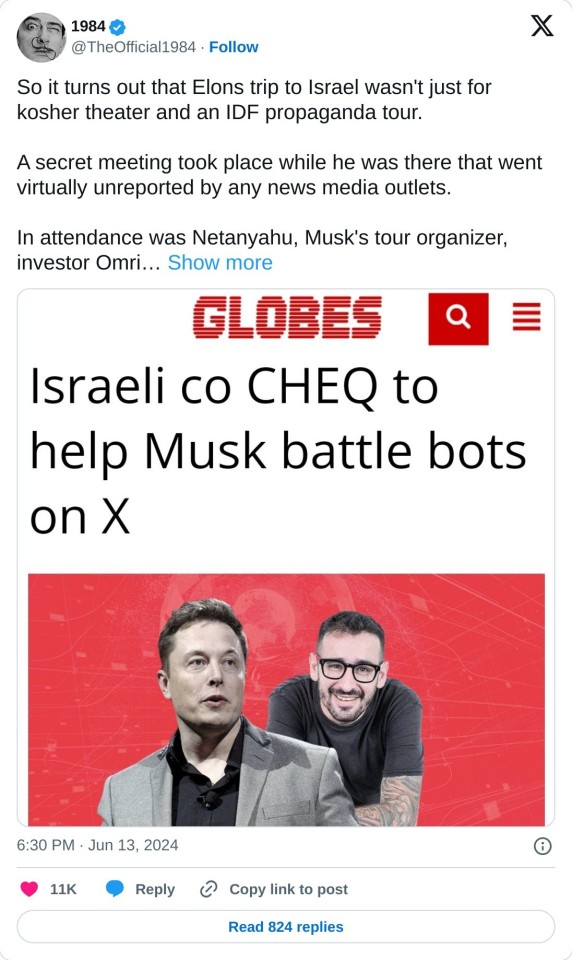
So it turns out that Elons trip to Israel wasn't just for kosher theater and an IDF propaganda tour.
A secret meeting took place while he was there that went virtually unreported by any news media outlets.
In attendance was Netanyahu, Musk's tour organizer, investor Omri Casspi, Brigadier General Danny Gold, Head of the Israeli Directorate of Defense Research & Development and one of the developers of Iron Dome, Aleph venture capital funds partner Michael Eisenberg, and Israeli cybersecurity company CHEQ CEO Guy Tytunovich who is ex-israeli intelligence unit 8200.
The six men talked about technology in the service of Israel's defense, dealing with fake content and anti-Semitic and anti-Israeli comments, and the use by non-democratic countries of bots as part of campaigns to change perceptions, including on the X platform.
The solution Musk was presented was the Israeli unicorn CHEQ, a company founded by ex-Israeli intelligence unit 8200 CEO Guy Tytunovich that combats bots and fake users.
Following the meeting, Elon signed an agreement with cheQ, and apparently, the reason for the quick closing of the deal was Elons "direct involvement" with the company.
Now. What they won't tell you.
Israel is primarily responsible for the creation of bots. There currently exists dozens of ex-Israeli intelligence firms whose sole purpose is perception management, social media influencing/manipulation, disinformation campaigns, psychological operations, opposition research, and honey traps.
They create state of art, multi layer, AI avatars that are virtually indistinguishable from a real human online. They infiltrate target audiences with these elaborately crafted social-media personas and spread misleading information through websites meant to mimic news portals. They secretly manipulate public opinion across app social media platforms.
The applications of this technology are endless, and it has been used for character assassination, disruption of activism/protest, creating social upheaval/civil unrest, swaying elections, and toppling governments.
These companies are all founded by ex-Israeli intelligence and members of unit 8200. When they leave their service with the Israeli government, they are backed by hundreds of billions of dollars through Israeli venture capital groups tied to the Israeli government.
These companies utilize the technology and skills learned during their time served with Israeli intelligence and are an extension of the Israeli government that operates in the private sector.
In doing so, they operate with impunity across all geographical borders and outside the bounds of the law. The Israeli government is forbidden by law to spy on US citizens, but "ex" Israeli intelligence has no such limitations, and no laws currently exist to stop them.
Now back to X and Elon Musk.
Elon met with these people in secret to discuss how to use X in service of Israel's defense.
Elon hired an ex-Israeli intelligence firm to combat the bots…. that were created by another ex-israeli intelligence firm.
Elon hired an ex-israeli intelligence firm to verify your identity and collect your facial biometric data.
Do you see the problem yet?
Israel now has end to end control over X. Israel can conduct psychological operations and create social disinfo/influence campaigns on X with impunity. They now have facial biometric data from millions of people that can be used to create and populate these AI generated avatars.
They can manipulate public opinion, influence congressmen and senators, disrupt online movements, manipulate the algorithm to silence dissenting voices against Israel, and they can sway the US elections.
When the company that was hired to combat the bots is also Israeli intelligence…
Who is going to stop them?
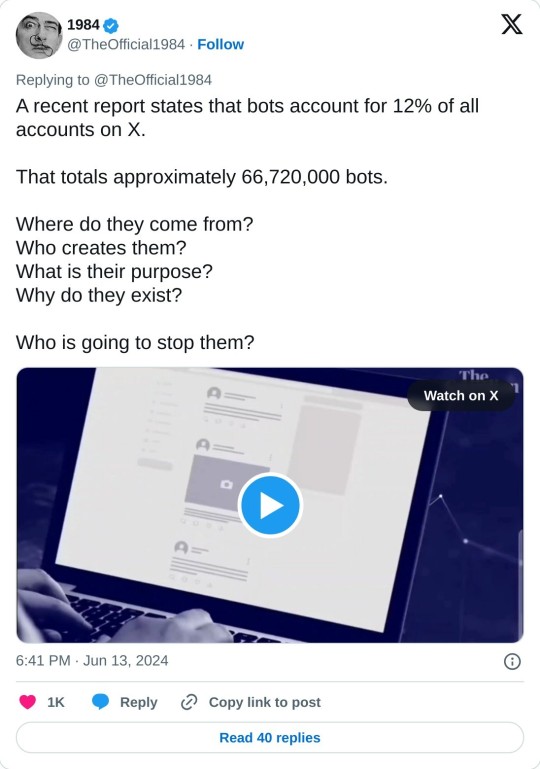
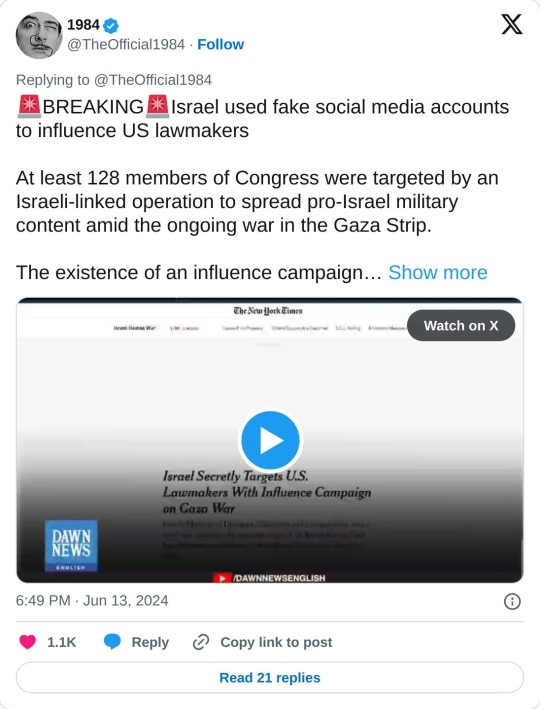
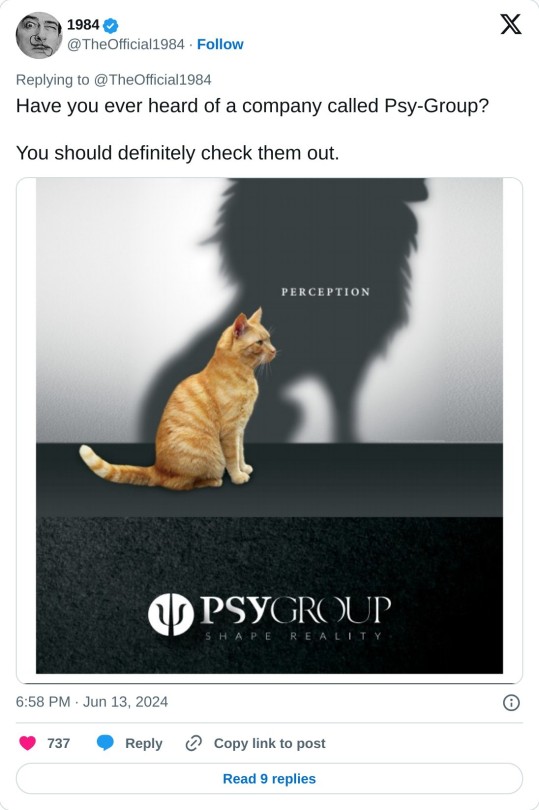
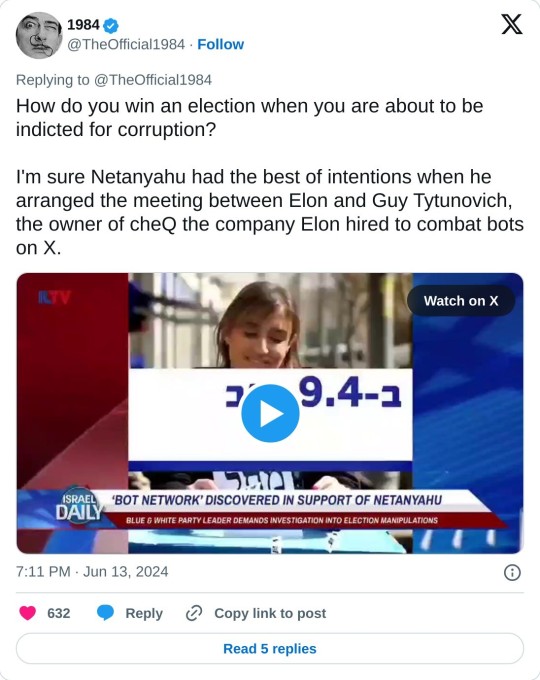
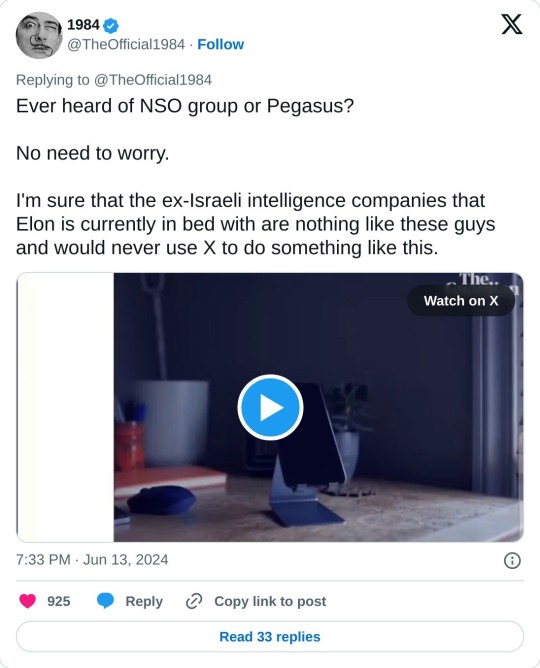
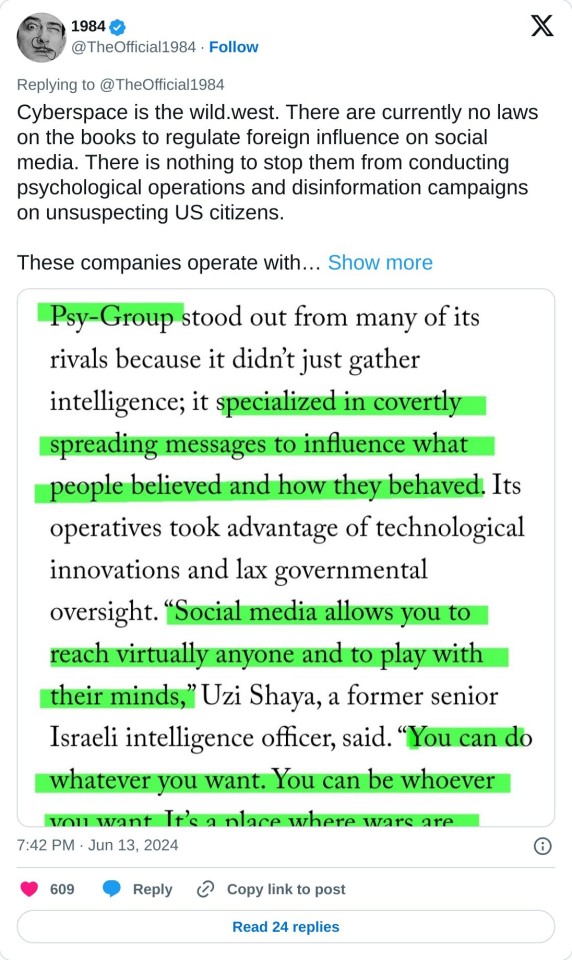

Cyberspace is the wild.west. There are currently no laws on the books to regulate foreign influence on social media. There is nothing to stop them from conducting psychological operations and disinformation campaigns on unsuspecting US citizens. These companies operate with impunity across all geographical boundaries and there is nobody to stop them. But don't take my word for it.
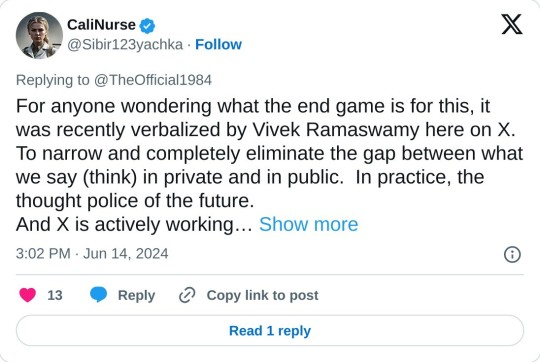
For anyone wondering what the end game is for this, it was recently verbalized by Vivek Ramaswamy here on X. To narrow and completely eliminate the gap between what we say (think) in private and in public. In practice, the thought police of the future. And X is actively working on it.
194 notes
·
View notes
Text
MotoGP guide
TEAMS AND RIDERS
In MotoGP, there are “factory teams” and “satellite teams”
Both factory teams and satellite teams compete on the same track
Each manufacturer is allowed 1 team per class
There is no limit to how many satellite teams can get bikes from a manufacturer (i.e. there are 4 Ducati teams)
A team consists of 2 drivers
For the 2025 season, there are 11 teams and 22 drivers
Factory Teams
Factory teams are directly supported by motorcycle manufacturers
Factory teams are considered top-tier teams with the hierarchy; they often have priority access to the latest upgrades and are typically composed of highly skilled riders
The manufacturers design and produce their motorcycles and have their dedicated championship
Factory teams get significant financial and technical support from their manufacturer (access to the latest technology, support for bike development)
Factory teams are a direct representation of the manufacturers on track. the factory team’s success reflects on the manufacturer’s brand and image
Satellite Teams
Satellite teams are independent entities and may not be directly part of a manufacturer.
They don’t have the same level of support from a motorcycle manufacturer as factory teams.
Satellite teams usually use the “same” motorcycles as the factory teams but they don’t typically have the latest upgrades or the same level of technical support
These teams typically purchase or lease the previous year’s bike from the manufacturers.
Satellite teams rely on their own sponsorships and funding (although they do receive support from the manufacturer it is not to the extent the factory teams do)
Satellite teams can switch manufacturers from year to year (when their contracts expire with manufacturers)
WEEKEND FORMAT
Each weekend from Friday to Sunday consists of free practice 1, 2, & 3, qualifying 1 & 2, a sprint race, a warm-up session, and a main race.
Friday: Free Practice Sessions
Fridays consist of only an fp1 and fp2
Fp1 (45 minutes)allows the drivers to familiarize themselves with the track and start setups.
Fp2 (45 minutes) is usually faster paced as teams gather final data and tune bike setups
Saturday: Practice, Qualifying & Sprint Race
Fp3 (30 minutes) is a shorter session but important, fp3 directly influences qualifying
The combined lap times of fp1, fp2, & fp3 decide the top 10 riders who skip Q1 and go straight into Q2
Qualifying Q1 (15 minutes) the riders who didn’t place in the top 10 from combined fp1-fp3 times compete to go into Q2 (only 2 riders advance)
Qualifying Q2 (15 minutes) The top 10 from combined fp1-fp3 times plus the top 2 from Q1 compete for pole and decide the top 12 grid positions
This sets the grid for the sprint and the main race
Sprint Race (15-20 minutes) were introduced in 2023
Covers half the main race distance
Awards points to the top 9
Sprint races are every weekend
Sunday: Warm-up & Main Race
Warm-ups (10 minutes) are just brief sessions in the morning before the race.
Checks the bikes and finalize the setup
Main Race (40-45 minutes) typically covers 20-25 laps
Points are awarded to the top 15 finishers
These points count toward the rider, team, and constructor championship
PITSTOPS
Under normal circumstances, there are no pitstops in races due to how short the race is
Riders and teams chose tires (soft, medium, or hard) before the race based on strategy and durability
Exceptions
Pit-stops can happen in flag-to-flag races, which happen during different weather conditions (i.e. rain)
Riders enter the pits to switch bikes, not tires
The teams prepare a second bike with the correct tires (wets for rain, slicks for dry)
An average pit stop is 5-10 seconds
RACE NEUTRALIZATIONS
Compared to f1, there are no safety cars, as the motorcycles are faster to maneuver than the cars.
Yellow Flags
A yellow flag is shown when there is a minor incident (a crash, debris, or a stopped bike)
Riders must slow down in the affected sector
Overtaking is not allowed in the flagged zone
Once the flag is withdrawn racing resumes as normal
Red Flag
A red flag is shown for more serious incidents (a dangerous crash, severe weather conditions, unsafe track conditions that can’t be cleared quickly)
All riders must return to the pitlane
Depending on how much of the race has been completed the race may be restarted from the beginning, resumed with the remaining laps, or declared finished
CHAMPIONSHIPS
Motogp has 3 championships: the rider championship, the team championship, and the constructors championship
Rider Championship
The rider with the most points at the end of the season becomes the World champion
When talking about rider championships, moto2 & moto3 are both included (i.e. Marc Marquez has 8 Grand Prix world championships, 6 MotoGP, 1 moto2 & 1 moto3)
Team Championship
The team with the highest total points at the end of season wins
Points are earned from the sum of the points earned by the Team 2 riders
This reflects the performance of the riders, and the teams’s efforts, including the engineers and mechanics
Constructor Championship
The constructor with the most points at the end of the season wins
Only the highest-placed rider from each constructor scores points for the manufacturer
Points go with the rider’s finishing position (i.e. if Pecco in a Ducati finishes 1st, ducati gets 25 points)
POINTS
Riders earn points in sprint races and main races
There is no bonus point for the fastest lap
Sprint Race Point Finishers
12
9
7
6
5
4
3
2
1
Main Race Point Finishers
25
20
16
13
11
10
9
8
7
6
5
4
3
2
1
PENALTIES
FIM stands for Fédération Internationale de Motocyclisme (International Motocycling Federation)
FIM governs premier motorcycle racing series (Motogp, Moto2, Moto3)
Regulations are broken into technical and behavioral/riding
Warnings & small penalties
Warnings from the stewards either made privately or public
Warnings can be given for small things such as track limits
Cash penalties or fines can also be issued to riders and teams
In-Race penalties
Change of position penalties are given during a race
The rider must slow down to either give back a position or let other riders pass
A long lap penalty means the rider takes a longer route through a specific part of the track during the race
Takes about 1-2 seconds off the rider’s time
Time penalty adds up to 2 minutes to the rider’s race time
Given if a rider gains an unfair advantage
Ride-through penalty rider must enter the pit lane riding the speed limit
costs the rider 20-30 seconds
Stop-and-Go Penalty rider must stop in the pit box for 3-10 seconds before rejoining the race
Post-Race Penalties
Position Drop at the end of the race (5th to 7th)
Grid penalty for the following race the rider is dropped several places on the starting grid next race
Riders can lose championship points as punishment
Riders can also get disqualified (usually following a break in the technical rules)
Penalty points
Riders collect penalty points
If they reach 4 penalty points they get a grid group
If they reach 10 penalty points they are banned from the next race
How Penalties Occur
Jump starts
Exceeding track limits
Ignoring yellow flags
Causing a collision
Exceeding fuel or tire limits
Technical Violations
MEET THE GRID
Now that we understand how the sport works and what to expect during a typical weekend let’s learn who to expect
Which teams are constructors, factory, and satellite teams
Notable: you will also hear the name Valentino Rossi (9x world champion) he is considered one of the greatest of all time
He not only owns the VR46 team but also has a driver academy which many of the Italian drivers go through
He is also famous for his rivalry with Marc Marquez (Rosquez)
Factory Teams
Ducati Lenovo Team (Ducati)
63 Fracesco “Pecco” Bagnaia
93 Marc Marquez
Red Bull KTM Factory Racing (KTM)
37 Pedro Acosta
33 Brad Binder
Aprilia Racing (Aprilia)
89 (1) Jorge Martin
72 Marco “Bez” Bezzecchi
Monster Energy Yamaha MotoGP (Yamaha)
20 Fabio Quartararo
42 Alex Rins
Honda HRC (Honda)
10 Luca Marini
36 Joan Mir
Satellite Teams
Redbull KTM Tech3 (KTM)
12 Maverick Viñales
23 Enea Bastianini
Gresini Racing MotoGP (Ducati)
73 Alex Marquez
54 Fermin Aldeguer rookie
Pertamina Enduro VR46 (Ducati)
49 Fabio Di Giannantonio
21 Franco Morbidelli
Prima Pramac Yamaha (Yamaha)
88 Miguel Oliveria
43 Jack Miller
LCR Honda (Honda)
5 Johann Zarco
35 Somkiat Chantra rookie
Trackhouse (Aprilia)
25 Raul Fernandez
79 Ai Ogura rookie
2025 SCHEDULE
The schedule stretches across 22 rounds, making it the biggest season in MotoGP history
Pre-Season Testing
Sepang Shakedown Test: January 31-February 2, 2025 (this test is for rookies and race riders from manufacturers in concession Rank D which is currently Yamaha and Honda)
Sepang MotoGP Test: February 5-7, 2025
Buriram MotoGP Test: February 12-13, 2025
Race Calendar
Thailand, Buriram: February 28-March 2
Argentina, Termas de Rio Hondo: March 14-16
Americas, COTA: March 28-30
Qatar, Lusail: April 11-13
Spain, Jerez: April 25-27
France, Le Mans: May 9-11
England, Silverstone May 23-25
Aragon, MotorLand: June 6-8
Italy, Mugello: June 20-22
Netherlands, Assen: June 27-29
Germany, Sachsenring: July 11-13
Czech Republic, Brno: July 18-20
Austria, Red Bull Ring: August 15-17
Hungary, Balaton Park: August 22-24
Catalunya, Barcelona: September 5-7
San Marino, Misano: September 12-14
Japan, Motegi: September 26-28
Indonesia, Mandalika: October 3-5
Australia, Phillip Island: October 17-19
Portugal, Portimao: November 7-9
Valencia, Ricardo Tormo: November 14-16
GET CONNECTED
The easiest way to stay up to date is by following MotoGP on Instagram (and their broadcast channels) and Twitter
They also have a YouTube where a lot of full races get posted
There is an official app (MotoGP) and website (www.motogp.com)
Similar to f1, they have a VideoPass subscription to watch the races, they have a current season, archived seasons, documentaries, collections, and a spoiler-free experience
To get a VideoPass you have the option of VideoPass+TimingPass, Yearly, Monthly, and a free trial
A full season pass is 148.99€
Currently, the preseason full pass is 24.99€
The free trials work for 1 grand prix race weekend for full access
After testing, Monthly subscription costs will come out (I will update when they do)
Please feel free to ask questions, correct any mistakes I made, or add any information I missed :)
#motogp#motorsports#valentino rossi#vr46 academy#ducati#marc marquez#rosquez#yamaha#pecco bagnaia#motogp guide#my friend is doing a meet the grid i will link it when it is up so you can better know the riders as well !!#f1#vr46#mm93#honda#marco bezzecchi#beznaia#formula 1#you probably have seen that#lando norris#is Valentino’s biggest fan !!#that’s where the yellow in his helmet comes from !!#he has also done things with#fabio quartararo
65 notes
·
View notes
Text
Dylan Rodríguez defines the non-profit industrial complex as "a set of symbiotic relationships that link political and financial technologies of state and owning class control with surveillance over public political ideology, including and especially emergent progressive and social movements." He and Ruth Wilson Gilmore argue that the NPIC is the natural corollary to the prison industrial complex (PIC). While the PIC overtly represses dissent the NPIC manages and controls dissent by incorporating it into the state apparatus, functioning as a "shadow state" constituted by a network of institutions that do much of what government agencies are supposed to do with tax money in the areas of education and social services. The NPIC functions as an alibi that allows government to make war, expand punishment, and proliferate market economies under the veil of partnership between the public and private sectors.
INCITE! Women of Color Against Violence, The Revolution Will Not be Funded: Beyond the Non-Profit Industrial Complex
40 notes
·
View notes
Text




We were honoured to welcome Her Royal Highness the Princess Royal to the 88th IEC General Meeting in Edinburgh hosted by BSI, host of the UK National Committee of the IEC.
Her Royal Highness had the opportunity to meet with several leading experts at the forefront of developing international standards and conformity assessment for a safe, reliable and more efficient world.
The event brought together around 1,250 global experts, who attended various technical committee and governance meetings. These sessions focused on sharing best practices and future planning for the development and implementation of global standards for an efficient energy infrastructure, and emerging technologies in the electrotechnical sector.
During her visit, Her Royal Highness was also introduced to the IEC Global Impact Fund, a key initiative aimed to help underserved communities unlock the benefits of electricity safely, build up their capacity to create a better future, and develop solutions to achieve sustainability goals.
@IECStandards | 28 October 2024
44 notes
·
View notes
Text
"Today, December 20, marks the official end of the Marburg Virus Disease outbreak in Rwanda. It has been 42 days – two full incubation periods – since the last confirmed case left the national Marburg treatment centre after testing negative.
In previous outbreaks, Marburg, which is caused by a virus related to Ebola, has killed up to 88 per cent of people infected. And Rwanda had never seen this disease within its borders before the current outbreak began in September. Despite Rwandan physicians having never encountered it before, the mortality rate observed in this outbreak is under 23 per cent – the lowest-ever death rate for a Marburg outbreak in Africa.
While the virus initially spread fiercely in two major hospitals in the capital Kigali and among family members of one of the initial cases, Rwanda’s rapid response, with implementation of strict infection prevention and control, isolation and containment of cases, prompt initiation of aggressive supportive care, delivery of investigational therapeutics and vaccines, and tracing and monitoring of contacts quickly brought the outbreak under control. The rate of new cases halved between the outbreak’s second and third weeks and dropped by around 90 per cent thereafter.
One of the most remarkable aspects of this response was an international effort, initiated and led by the Rwandan government, to administer thousands of doses of a promising experimental vaccine to front-line health workers under a clinical trial protocol, with the first subjects vaccinated in a remarkably short timeframe.
...
Rwanda, for its part, has invested heavily in its healthcare system and has incorporated epidemic preparedness into its national health policies. Rwanda has well-trained medical staff working in well-run hospitals and community-based health services. It has been investing in technology-based disease surveillance systems and its laboratories can handle fast, accurate diagnostic testing at scale.
In early September, after months of planning, Rwandan scientists and health officials joined CEPI and other private sector partners to walk through a “tabletop exercise” about the 100 Days Mission. It was through this in-person training exercise that key relationships between disease outbreak experts, Rwandan health authorities and researchers, vaccine developers and clinical trial specialists were cemented.
...
We also have no doubt that with the right focus and funding, such nationally-led, globally-supported, life-saving responses to novel disease outbreaks could be accomplished by any government in any region. By taking a proactive approach and using the 100 Days Mission as a game plan, all countries can get ahead of epidemic and pandemic threats and neutralise their catastrophic potential."
Read the full piece here: https://www.telegraph.co.uk/global-health/science-and-disease/partnerships-preparedness-halted-rwanda-marburg-outbreak/
https://www.telegraph.co.uk/global-health/science-and-disease/partnerships-preparedness-halted-rwanda-marburg-outbreak/
42 notes
·
View notes
Text
The Quantum Financial System (QFS) is a theoretical financial system that aims to challenge the existing banking system and address issues like corruption and manipulation in the financial sector.
It's believed that the QFS would use artificial intelligence (AI) and quantum computing to revolutionize financial transactions and eliminate the need for traditional systems like SWIFT.
The QFS is designed to resist encryption-breaking attempts by quantum computers, which could redefine data security in the digital world.
While direct investment in the QFS is possible, some believe that ISO 20022-compliant may play an important role in the new system.
Quantum-based technologies in finance offer benefits like enhanced computational power, advanced data analysis, increased security, portfolio optimization, and more.
QFS is the Future, Trump is Fighting for the Future and for the betterment of United States of America.
Move your funds into the QFS ledger account and be safe from the incoming bank crash. I will be here to navigate you onto your transition into the QFS ledger account

#donald trump#wells fargo#bank of america#breaking news#bank crash#bad government#world news#qfs#bank clash#new york#decentralized#bad omens#decentralisation#decentralised finance#marine life#quantum financial system#nesara#gesara#stay woke#washington dc#white house#veterans#patriotic#politics#trump 2024#republicans#educate yourself#reeducation#reeducate yourself#be aware
86 notes
·
View notes
Note
What are your thoughts on Sam going to law school and becoming a lawyer? Idk I never understood why the writers chose that profession for Sam’s post college life.
I think it has more to do with status than anything. It's a historically well-respected profession in the United States. It's a mix of a challenging degree path "proving" your fortitude/intelligence in a way others can see + high potential to earn a very large income in the future. Lawyers and doctors were mentioned often in the same breath when I was growing up to describe prestigious, respected professions. Sam wanted to be respected by normal people and make a very comfortable living. He wouldn't have chosen a medical profession because dealing with sick and dying people would probably be upsetting. I could see him trying out finance with the goal of becoming a hedge fund manager or something, but for all their high earnings, they'll never have the same kind of respect doctors or lawyers do.
I'm sort of surprised that he didn't consider engineering or computer science, because Stanford has good programs in those areas, and in 2005, the technology sector was booming. But I think it yet again goes back to wanting a certain kind of traditional respect. He didn't want to be some kind of pioneer—he wanted something solid, high earning, with a long history of prestige.
53 notes
·
View notes